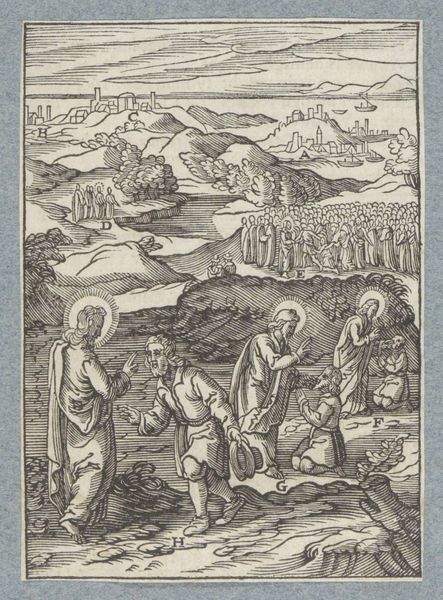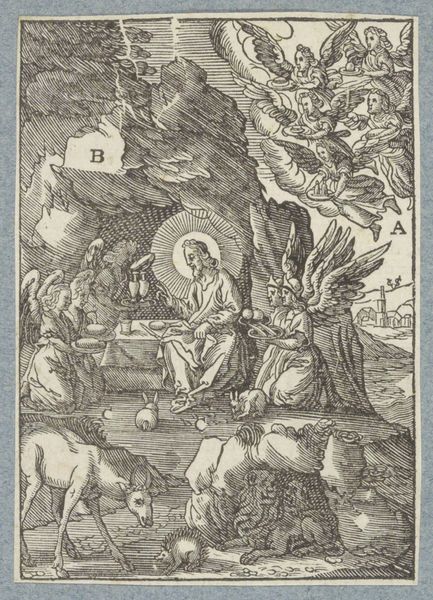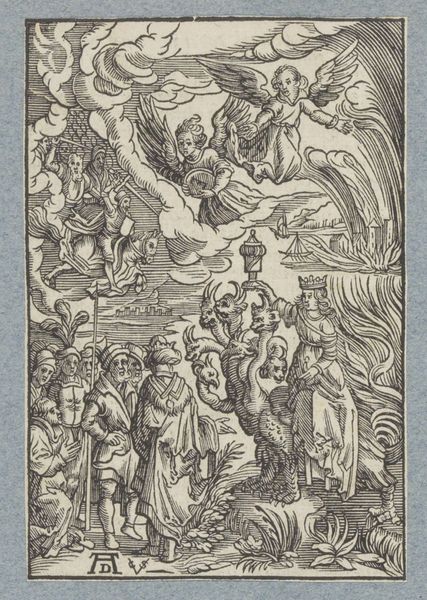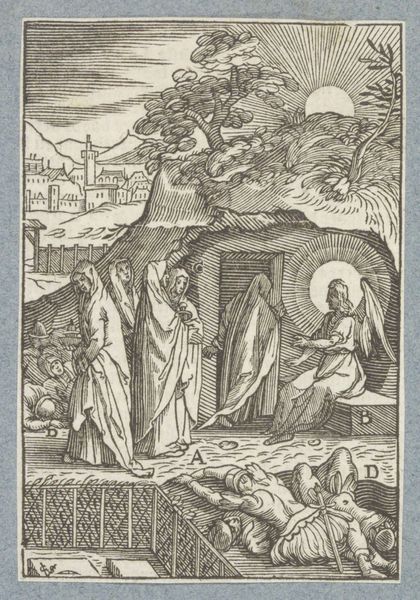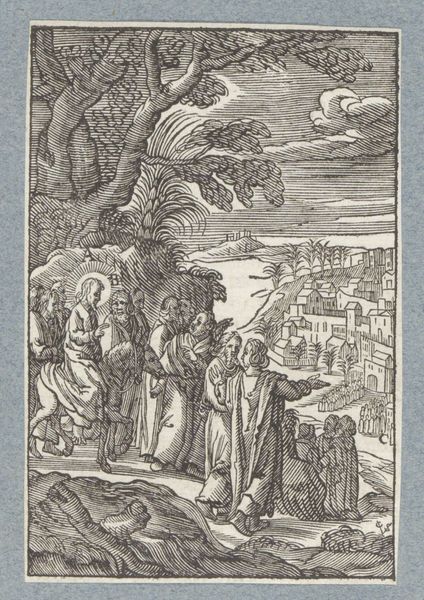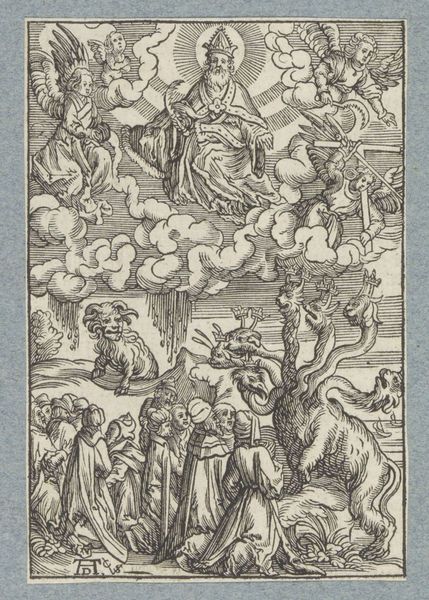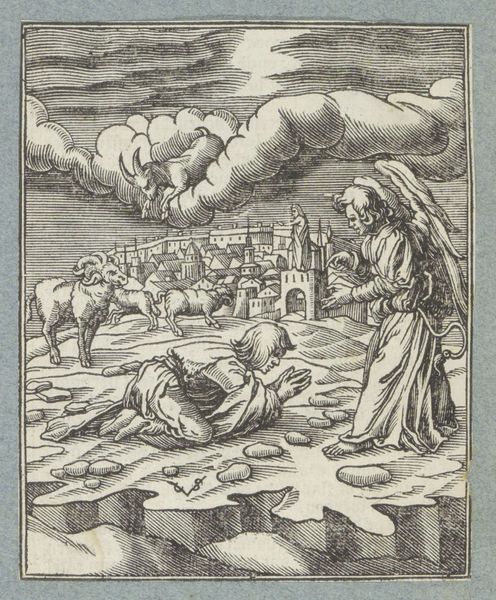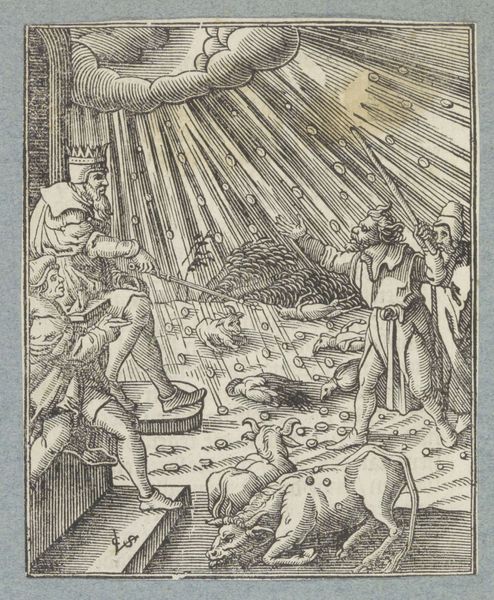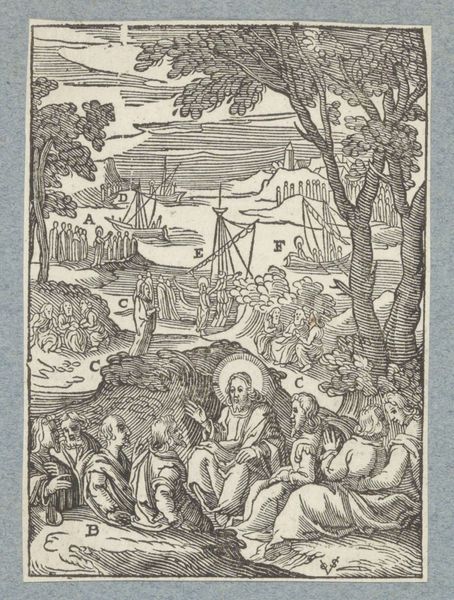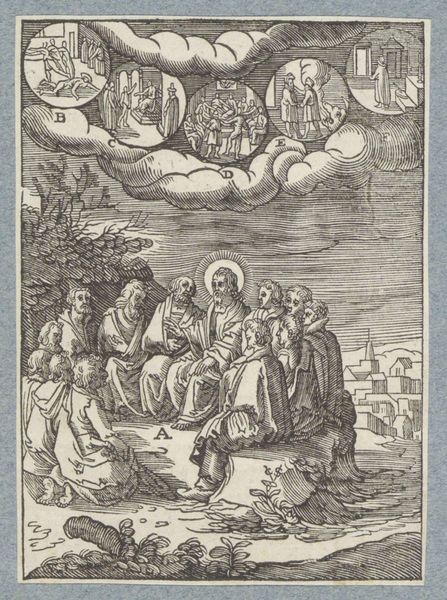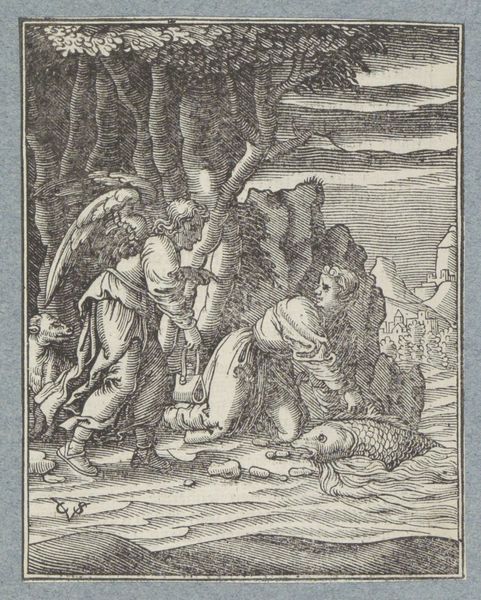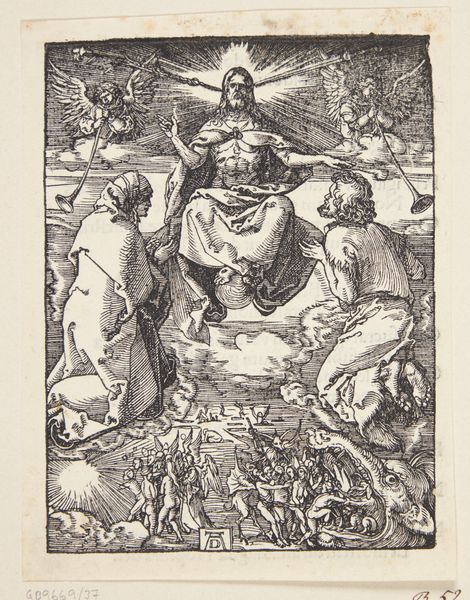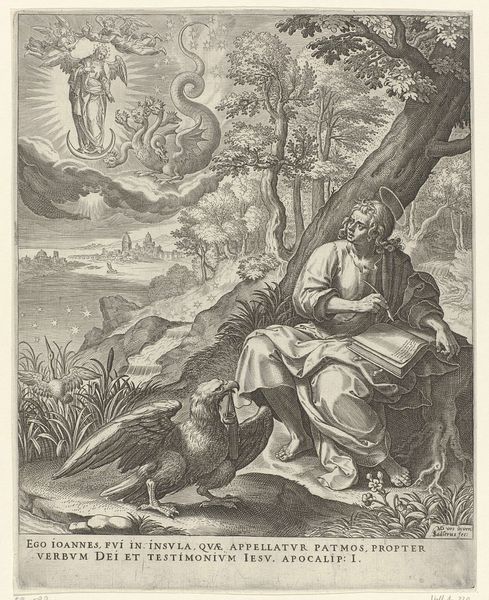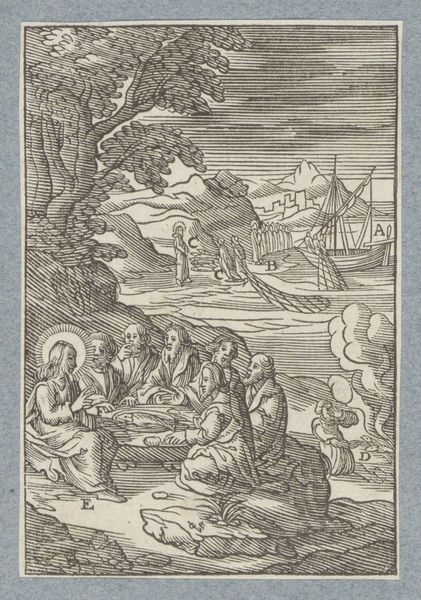
Vijfde en zesde scheppingsdag: schepping van de vogels, vissen en de landdieren 1645 - 1646
0:00
0:00
drawing, print, woodcut, engraving
#
drawing
#
toned paper
#
medieval
#
narrative-art
# print
#
pen sketch
#
pencil sketch
#
sketch book
#
landscape
#
figuration
#
11_renaissance
#
personal sketchbook
#
pen-ink sketch
#
woodcut
#
line
#
pen work
#
sketchbook drawing
#
history-painting
#
northern-renaissance
#
sketchbook art
#
engraving
#
pencil art
Dimensions: height 111 mm, width 77 mm
Copyright: Rijks Museum: Open Domain
Curator: Good morning. We’re looking at a print titled "Vijfde en zesde scheppingsdag: schepping van de vogels, vissen en de landdieren," or "The Fifth and Sixth Days of Creation: The Creation of Birds, Fish and Land Animals," made between 1645 and 1646. It's attributed to Christoffel van Sichem the Younger. Editor: Immediately, what strikes me is the busyness. The whole thing is packed, like a pre-overcrowding anxiety dream. I’m also catching a medieval vibe. Does it hit you that way, too? Curator: Absolutely. While it dates from the mid-17th century, the imagery and particularly the use of line harken back to earlier traditions. These prints often circulated widely and played a crucial role in disseminating biblical stories and moral teachings throughout society. Consider this one as a kind of early graphic novel page, a vehicle for complex narratives. Editor: A moral megaphone! Makes sense. And talk about flat! The artist is creating the illusion of depth by varying the density of those engraved lines, yet the animals practically line up as if posing for a class photo. Though the elephants are admittedly a tad...peculiar. Did Sichem actually ever *see* an elephant? Curator: Unlikely. This is where the symbolic weight often outweighs literal accuracy. He is referencing the totality of creation. Keep in mind also that printed images like this could serve different social purposes—from educating those who could not read, to shaping theological discourse. It's an active participant in the religious landscape of the time. Editor: And how people pictured the cosmos then. Fascinating to realize how potent these simple tools could be to inform and shape entire populations, in very persuasive ways. Well, I think my initial “overcrowding” impression was more than a quirk of artistry then; rather a glimpse into how many of our societal structures developed to categorize the known. Curator: Precisely. It really makes you think about how deeply entwined art is with social influence, doesn’t it? Editor: It does. Gives this piece a renewed purpose and impact when one considers it alongside such points, right? Curator: Indeed. Thank you for sharing your observations. Editor: You too!
Comments
No comments
Be the first to comment and join the conversation on the ultimate creative platform.
